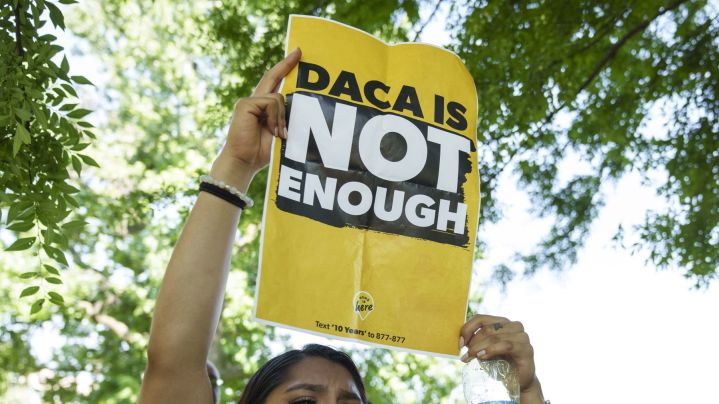DACA Fees Officially Increase for the First Time Since 2016

WASHINGTON, DC - JUNE 15: Immigration advocates rally to urge Congress to pass permanent protections for DACA recipients and create a pathway to citizenship, near the U.S. Capitol June 15, 2022 in Washington, DC. In 2012, President Barack Obama and his administration introduced the Deferred Action for Childhood Arrivals (DACA) program, protecting eligible immigrants who came to the United States as children from deportation. In 2020, the U.S. Supreme Court upheld the DACA initiative in a 5-4 ruling. (Photo by Drew Angerer/Getty Images)
The United States Citizenship and Immigration Services (USCIS) has officially moved forward with an increase in the total filing fee for Deferred Action for Childhood Arrivals (DACA) as of April 1, 2024. Before this date, the cost to file a request (initial and renewal) was $495. However, after April 1st, the cost is $555 for those submitting online, while those submitting on paper will pay $605.
The option to submit documentation online remains, as access to computers and internet services is unequal among low-income populations.
DACA fees involve two separate documents, the I-765 Work Permit and the I-821D DACA renewal. And that’s not taking into account the Advance Patrol I-131 application increase. The last time the application prices went up was in 2016. The stated purpose for the increase is to cover the costs and avoid future application backlogs, and it was finalized on January 31, 2024. The USCIS is one of the few federal agencies funded by the fees it collects, not taxes or Congress.
The DACA fees are not the only ones increasing. USCIS has also announced increases in other immigration fees, such as Form I-129F (Petition for Alien Fiancé(e)) and Form I-130 (Petition for Alien Relative), which have gone up to $625 for those submitting online and $675 for those submitting on paper. Meanwhile, Form I-485 (Application to Register Permanent Residence or Adjust Status) has gone up from $1,225 to $1,440.

It’s important to note that there are fee waivers available for some forms and applicants in specific situations who demonstrate an inability to pay. You can check if you qualify and what you would have to do to request one here.
If you have questions about the USCIS fee rule, here’s their FAQ about the subject, which includes a PDF breaking things down. If you would like to calculate how much your fees will be, here’s the fee calculator. And if you would like to learn more about the different kinds of green cards and their fees, you can learn more here.